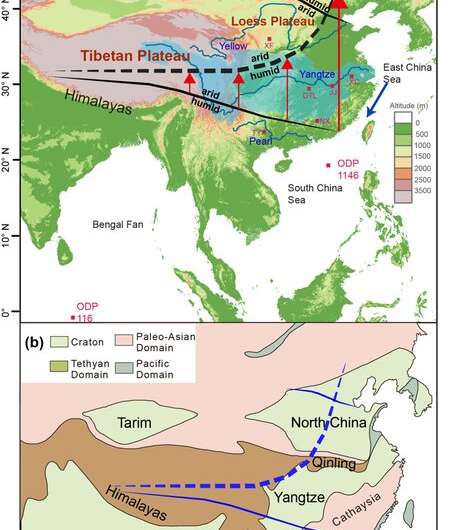Phys.org August 2, 2021
The strong erosion in the Himalayas was assumed to be a primary driver of Cenozoic atmospheric CO2 decline and global cooling predominantly through accelerating silicate chemical weathering in the India-Asia collision zone or through effective burial of organic carbon in the nearby Bengal Fan in South Asia. An international team of researchers (China, France) has found that the northward advance of the East Asian monsoon on tectonically inactive subtropical China induced globally significant silicate weathering atmospheric CO2 sink. The organic carbon burial flux is approximately 25% of the contemporary CO2 consumption by silicate weathering. The unusual Mg-rich nature of eroded crust not only enhances the tectonic forcing of climate but also can contribute to the rise in the Mg content of the ocean during the Neogene. The key findings of this study suggests that the tectonics affects Cenozoic cooling via modulation of the geological carbon cycle in diverse ways, and such forcing might not be fully extrapolated to older global-scale orogeny…read more. Open Access TECHNICAL ARTICLE

Cenozoic humid/arid boundaries in China for the Palaeogene (bold line) and the Neogene to Quaternary (dashed line)…Credit: Science China Press